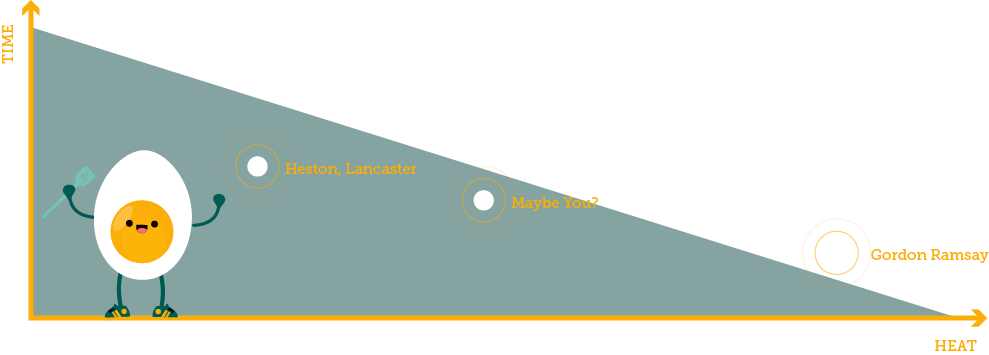When comparing methods, you'll notice that they agree on one thing: fresh eggs matter. The problem is that "fresh" is rarely defined.
I started thinking about all this when it all went wrong with eggs that had been bought that day. Another time, I bought eggs at both the beginning and end of the week from a shop, and the eggs had the same expiration date. These eggs must've sat somewhere a few days before hitting the shelf.
So, rather than fresh, let's talk about the quality of the egg, largely made up of:
 Time from the chicken's butt to your mouth
Time from the chicken's butt to your mouth The entire process that made that egg
The entire process that made that egg
Eggs from caged/factory farmed chickens, and discount grocery store will tend to produce eggs with thin/brittle shells, runny whites, and pale yolks with a thin membrane that easily ruptures. This won't do any good, even if you take them right from the shop. Organic, and free range eggs are, on the other hand, sturdy, and tend to have much better color belying the nutrients and proteins that give it structure. We ran an experiment, with week-old eggs of a trusted brand and vendor a few times, and they really hold up.
Quite a few methods advocate straining the egg as a way to compensate for quality -- it'll reduce the amount of low-protein/high water-content albumin ( white ). For an old, or factory-produced egg, this might make the difference. It's not always easy to get down to the market these days.
Beyond quality, size does matter (sometimes). The size and type of egg can have vastly different mass variations. If you're following a recipe exactly, a 50% volume difference on a 2 minute recipe is a drastic change.
Times being what they are, you may not have a choice of which eggs you're going to get. So, remember that an egg is not just an egg. Consistency is probably the most important thing in terms of quality, so be prepared for hiccups when you change things up with your egg choice.

